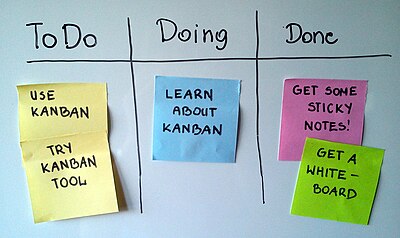
“Well Marge, self-improvement has always been a passion of mine.”
—Homer Simpson
I like many things about my new position as a faculty member at the ASU W. P. Carey School of Business. For starters, I enjoy interacting with smart cookies on a daily basis. I’ve been called worse things than professor in my life. Next, given all of the uncertainty in the world today, a steady paycheck isn’t a bad thing.
Perhaps best of all, though, is the willingness of my students to experiment with different collaboration tools and technologies, especially on their capstone projects. That is, they are not already stuck in their ways. Unlike many if not most professionals of a certain age, my students do exclusively use one tool (e-mail) to accomplish all of their tasks. They are more than willing to embrace many of the tchotchkes that I recommend. What’s more, sometimes they’ll bring new ones to me.
New workplace collaboration tools can create exciting new opportunities and save a boatload of time.
I have fought this battle myriad times (often unsuccessfully) and I can’t tell you how refreshing this is.
Myriad Benefits
As I write in Message Not Received, the benefits of powerful new collaborative tools are difficult to overstate, but don’t take my word for it. As industry analyst Fran Howarth writes:
Collaboration apps can connect everyone in the organization, from the CEO to an intern or the product marketing manager to a sales representative. Increased workplace collaboration can reveal opportunities to create new efficiencies, streamline operations, and drive business growth.
You’ll get no argument from me. Radical companies such as Klick Health have eliminated e-mail altogether. Progressive organizations are eschewing e-mail for truly collaborative tools such as Slack, Asana, Trello, and countless others. In the process, they largely are freeing employees from the 14 or so hours per week that they have traditionally spent on e-mail. (If you still qualify as a skeptic and think that e-mail can still do everything, click here.)
 Don’t get me wrong: Working smarter doesn’t just mean adopting new apps. There’s a critical human element involved. Specifically, we need to ask ourselves when we should opt for decidedly low-tech tools such as in-person meetings, phone conversations, and Kanban boards.
Don’t get me wrong: Working smarter doesn’t just mean adopting new apps. There’s a critical human element involved. Specifically, we need to ask ourselves when we should opt for decidedly low-tech tools such as in-person meetings, phone conversations, and Kanban boards.
Simon Says: What are you waiting for?
As I peer into the future, I certainly don’t see e-mail going the way of the Dodo. For certain things, it’s far too useful to die.
As I put on my swami hat, though, I envision more workplaces adopting a wide variety of tools—some old and some new. All else being equal, I’d wager that the organizations with employees who routinely embrace these new tools will do better than organizations stuck in the past.
IBM paid me to write this post, but the opinions in it are mine.

 PHIL SIMON
PHIL SIMON


0 Comments